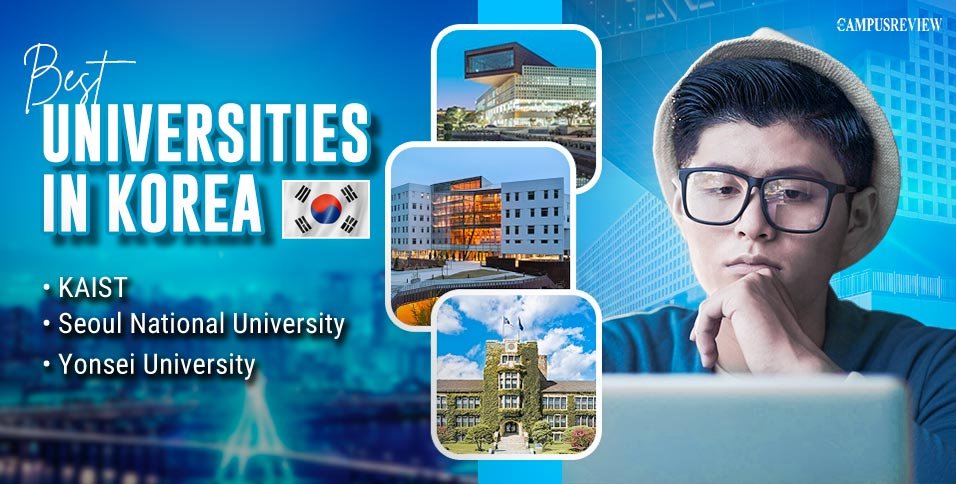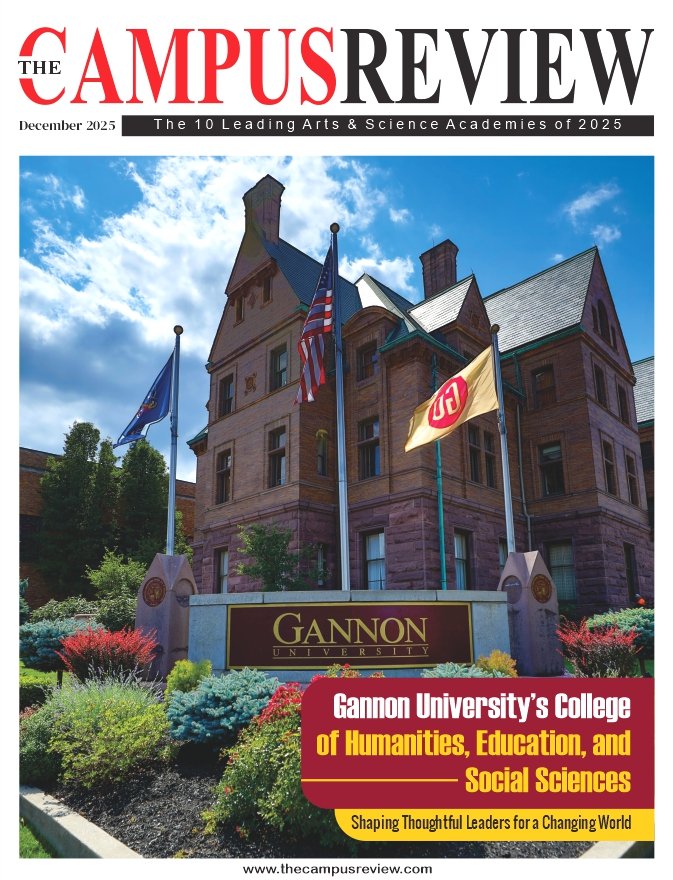The best universities in Korea are quickly emerging as global forces in both artificial intelligence and space technology, driven by bold national projects and groundbreaking research. In recent years, the country has launched its own satellites, advanced electric propulsion systems, and expanded AI capabilities through dedicated graduate schools and industry partnerships. This convergence is reshaping the future of space missions — from real-time satellite data analysis to fully autonomous spacecraft. These universities don’t just teach theory; they put students in labs, on design teams, and even in mission control, working with real hardware and live data. With strong links to institutions like the Korea Aerospace Research Institute and global research networks, they prepare graduates to lead in a sector where innovation moves fast and opportunities span Earth observation, robotics, and deep-space exploration.
What to Look for in a Top Program
When choosing the best universities in Korea for AI and aerospace, rankings alone don’t tell the full story. What really matters is how well a program blends theory with real-world application. The strongest ones create a bridge between computer science and aerospace engineering, so you’re not just learning concepts, you’re building solutions. Imagine studying Satellite Image Processing with Deep Learning and actually applying it to interpret Earth’s climate data, or taking AI for Autonomous Space Systems and understanding how spacecraft make smart choices without human input.
A top program also has dedicated research centers where innovation happens daily. These spaces allow students to work on satellite prototypes, robotics experiments, or AI-driven engineering tools. It’s the difference between reading about a concept and watching it come to life in your hands.
Partnerships with organizations like the Korea Aerospace Research Institute (KARI) or Hanwha Aerospace make learning even more relevant. These collaborations often open doors to internships, projects, and careers. For example, in 2023, KARI involved students in actual satellite mission planning — an opportunity that textbooks alone could never provide.
And finally, the global reach matters. Many leading Korean universities in 2024 joined international space research programs, letting students collaborate with experts worldwide. This kind of exposure ensures you graduate with not only knowledge but also the network and experience to lead in the field.
Choosing a program with these qualities means you’re preparing for the future, not just passing exams.
Here are the 5 best universities in Korea
| University | Best For |
| KAIST | AI-driven spacecraft systems, electric propulsion (Hall thrusters in CubeSats), aerospace AI labs, and direct AI research-to-flight hardware integration. |
| Seoul National University | AI for satellite data, remote sensing, geophysics, meteorology, earth observation, and autonomy in guidance, navigation, and control (GNC). |
| Yonsei University | Cross-disciplinary AI, robotics, computer vision, intelligent systems, and space biology for aerospace-life sciences integration. |
| POSTECH | AI in satellite/geospatial analytics, computational imaging, and data-driven space services via tech institutes and industry labs. |
| UNIST | Intelligent control, signal processing, ubiquitous AI, autonomy, perception, and satellite data processing through interdisciplinary research. |
1. KAIST (Korea Advanced Institute of Science and Technology)
KAIST remains one of the best universities in Korea for anyone who wants to merge artificial intelligence with space technology. It leads not only in theory but also in turning lab work into real hardware that flies in space. This is where students see their AI models power spacecraft in actual missions, not just simulations. The university combines world-class expertise in AI and aerospace engineering with strong national and industry connections, creating a direct path from research to orbit.
In recent years, KAIST’s Electric Propulsion Laboratory developed “HallNN,” a machine-learning model that predicts Hall-effect thruster performance with under 10% error. This AI system is now part of a real CubeSat propulsion project called K-HERO, set to fly aboard the Korean KSLV-2 rocket. Across campus, the Aerospace Systems and Control Lab works on AI for spacecraft autonomy, fault detection, and intelligent sensing. At the same time, the Measurement Robotics & Diagnostic AI Lab focuses on structural health monitoring in aerospace systems.
Since 2019, the KAIST AI Graduate School has trained researchers to apply advances in computer vision, reinforcement learning, and optimization directly to space missions. Students often move from designing algorithms to integrating them into flight-ready hardware, and then to testing them in orbit. Few universities worldwide offer such a complete end-to-end journey.
KAIST’s strong presence in global research networks ensures that its graduates enter the workforce with real mission experience, advanced technical skills, and a proven record of innovation in AI-driven aerospace systems.
2. Seoul National University (SNU)
Seoul National University stands among the best universities in Korea for students who want to combine artificial intelligence with advanced space technology. It leads with an approach that blends strong AI foundations, deep aerospace expertise, and close industry and government connections. Students here don’t just study theory — they work on real missions that impact Korea’s national space goals.
The Interdisciplinary Program in Intelligent Aerospace Systems brings together experts from aerospace, mechanical, materials, and electrical engineering. This allows students to design satellites, model launch vehicles, analyze space risks, and even take part in remote sensing projects. These experiences connect directly to active national and industrial space initiatives, ensuring graduates have the skills that employers and agencies need today.
SNU also invests heavily in AI research through its Interdisciplinary Program in Artificial Intelligence, which involves over 100 professors, 200 AI-focused labs, and 2,000 researchers. Here, AI is not only studied as a core discipline but also applied to mission planning, autonomous spacecraft systems, and intelligent guidance, navigation, and control. Projects often include deep learning for satellite geophysics, meteorology, and full-scale space operations.
Its global collaborations give students opportunities to work with international teams, share data, and participate in joint research. This broad exposure builds technical skill and global perspective in equal measure.
By combining rigorous AI research, hands-on aerospace training, and unmatched industry links, Seoul National University prepares graduates to lead in both research and applied roles across the fast-growing AI-space sector.
3. Yonsei University
Yonsei University is for students who want to blend artificial intelligence with multiple disciplines, including aerospace, robotics, and biosciences. Its strength lies in its ability to connect AI expertise with diverse fields, giving students a unique advantage when working on space-related projects that demand cross-domain thinking.
The Department of Artificial Intelligence, established in 2019, and the AI Graduate School lead Yonsei’s AI education and research. With over 30 professors from 14 departments, students gain access to both strong technical training and broad application opportunities. Courses in machine learning, computer vision, robotics, big data, and autonomous systems prepare graduates to address real challenges in engineering, geospatial analytics, and satellite-based research.
Yonsei’s AI+X approach encourages students to integrate AI into fields as varied as engineering, medicine, and remote sensing. For example, its LE.A.P. (Learning, Architecture, Perception) and M.E.S.H. (Medicine, Engineering, Service, Humanity) programs foster both research depth and practical innovation. These initiatives, combined with the BK21 Artificial General Intelligence group, drive cutting-edge work in robotics and multimodal AI models.
The School of Integrated Technology and institutes such as the Institute of Space Bioscience create opportunities for students to apply AI to life sciences, satellite data, and remote sensing. This allows graduates to work at the interface of AI, aerospace, and advanced scientific domains.
By offering flexibility, strong industry ties, and interdisciplinary collaboration, Yonsei University equips its students to lead AI-driven solutions for future aerospace, geospatial, and scientific challenges worldwide.
4. POSTECH (Pohang University of Science and Technology)
POSTECH holds a strong place among the best universities in Korea for combining artificial intelligence with advanced space and satellite technologies. Known for its research intensity and small, collaborative environment, POSTECH gives students direct access to cutting-edge AI work with immediate applications in earth observation, satellite networks, and autonomous space systems. Its close ties to national research institutes and global tech companies ensure that ideas move quickly from the lab to real-world missions.
The Graduate School of Artificial Intelligence covers machine learning, data science, natural language processing, visual computing, and foundational AI theory. These areas feed directly into applications like computational imaging, remote sensing, and satellite data analytics. Labs such as the AIoT Lab and Human-centered Intelligent Systems Lab explore how AI can run efficiently on networked devices and in real-time environments — exactly the challenges faced by smart satellites and autonomous spacecraft.
Researchers at the Machine Learning Lab and Computer Vision Lab work on algorithms for satellite image processing, mission planning, and adaptive system responses. One notable achievement is POSTECH’s contribution to Electrochemical Random-Access Memory (ECRAM), a next-generation in-memory computing technology developed with global partners. This innovation enables faster, more energy-efficient on-board AI processing for space missions.
Through its AIBD Center and IT Convergence Research Institute, POSTECH fosters collaboration across computational sciences, electronics, materials, and industry. This ecosystem allows students to engage in projects that integrate AI with both satellite hardware and data-driven mission systems, preparing them to lead in the rapidly evolving AI-space sector.
5. UNIST (Ulsan National Institute of Science and Technology)
UNIST has earned its place for blending artificial intelligence with embedded, real-time, and intelligent systems. Its research culture focuses on creating AI that works efficiently under strict limits, making it ideal for spacecraft, satellites, and autonomous platforms. Strong links with industry and national research agencies mean students work on problems that matter in both labs and real missions.
The Graduate School of Artificial Intelligence offers tracks in AI Theories, AI Systems, and AI Applications. This covers everything from reliable AI and artificial general intelligence to advanced hardware–software design. Students gain skills in machine learning, optimization, and data-driven decision-making, all applied to environments where every milliwatt and processor cycle counts.
UNIST’s Embedded AI Lab develops sensing systems that learn and adapt in real time, even with tight energy and memory constraints — a must for satellites and deep-space probes. Their projects range from memory-efficient neural networks to intelligent fault detection systems, directly applicable to space robotics and on-board autonomy.
The university’s research in smart sensing, intelligent robots, and advanced signal processing supports next-generation satellite control, perception, and communication. Collaborations with Korea Aerospace Research Institute, Hyundai, and Samsung give students rare access to cross-sector projects and real deployment scenarios.
UNIST’s unique strength lies in its hardware–software co-design approach, enabling AI “at the edge” in the harsh conditions of space. This focus, backed by strong funding and global collaboration, prepares graduates to lead in practical AI for space exploration and satellite intelligence.
Key Takeaways
At its core, the rise of AI in space technology at the best universities in Korea isn’t just about ranking or facilities — it’s about how these institutions are reshaping the way we explore and understand the universe. The “if” is no longer whether AI will power future spacecraft; it’s how efficiently, safely, and autonomously it can do so. The “why” is rooted in necessity: deep space missions can’t depend on constant human control, and satellites must adapt to changing conditions without waiting for instructions from Earth.
These universities have built ecosystems where AI theory meets real space hardware, where students aren’t just simulating or imagining — they’re testing, launching, and iterating. From embedded AI that thrives on minimal resources to machine learning models that decode Earth’s climate or optimize propulsion systems, the focus is on solving the constraints that space uniquely imposes.
Looking ahead, the work happening here will define how nations deploy smarter satellites, enable autonomous planetary exploration, and build resilient systems for the unknown. For anyone who sees AI and space not as separate fields but as a shared frontier, Korea’s top universities offer more than education — they offer a seat at the table where the future is being engineered.
Also Read: 10 Best Universities in the USA You Should Know (2025)





